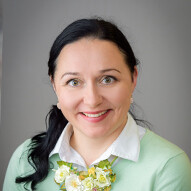Sarcomas in children
The word “sarcoma” (sar·co·ma) means a tumor that grows in the bones or soft tissue. Children’s Health℠ has an academic affiliation with UT Southwestern Medical Center and is a national leader in treating and studying a variety of pediatric sarcomas. We use a team approach where experts with different specialties work together to give your child the best opportunity for a good outcome.
What are pediatric sarcomas?
Pediatric sarcomas include a number of different cancers that affect children. All of these cancers involve tumors that grow from cells in a child’s bones or soft tissue. Sarcomas can also spread to other areas of the body.
What are the different types of sarcomas in children?
Pediatric sarcomas fall into two main categories; bone sarcomas and soft tissue sarcomas. Each category includes two types.
Bone sarcomas in children
Osteosarcoma - Typically develops in areas where bone is growing quickly, such as the knee or upper arm. It is the most common pediatric bone cancer, affecting about 400 kids in the U.S. every year.
Ewing’s sarcoma - Most of these tumors grow in bones of the legs, arms, back, chest or pelvis. Some grow in the kidney and other soft tissues. About 200 kids in the U.S. develop Ewing’s sarcoma each year.
Soft tissue sarcomas in children
Rhabdomyosarcoma - This type typically develops in muscles. Each year in the U.S., between 400 and 600 children are diagnosed with rhabdomyosarcoma.
Non-rhabdomyosarcoma soft tissue sarcomas - These include all soft tissue sarcomas that are not rhabdomyosarcoma. About 600 children in the U.S. develop these cancers each year. Tumors can develop in any area in the body that has soft tissue.
What are the signs and symptoms of sarcomas in children?
Symptoms vary from child to child, depending on what type of sarcoma they have and where it is.
Bone sarcomas may first cause swelling and pain where the tumor is located. Other symptoms may develop if the cancer spreads.
Lump or swelling where the tumor is growing
Fatigue
Fever
Numbness
Shortness of breath
Weakness
Soft-tissue sarcomas can start anywhere in the body, so they have many different symptoms.
Bone pain
Lump or swelling in the neck, chest or back
Bulging eye or vision problems
Jaundice (yellow coloring) in eyes or skin
Inability to use the bathroom
Weight loss or weakness
How are sarcomas in children diagnosed?
Generally, we identify the type of sarcoma by taking a sample of the tumor and studying its DNA. Then we take detailed pictures of the tumor, through tests like an MRI and PET-CT scan. These images show us how big the tumor is and whether it has spread to other places in the body.
We use the type, size and location of the tumor to decide which treatment will work best for your child.
What causes sarcomas in children?
Unfortunately, no one knows what causes these tumors.
How are sarcomas in children treated?
We offer several different treatments. Our pediatric oncologists work closely with the surgery and radiation oncology teams to provide seamless care throughout the course of treatment.
Our surgeons have expertise in performing complex surgeries, such as limb salvage or rotationplasty, that are used to treat osteosarcoma and Ewing's sarcoma.
Our radiation oncologists use cutting-edge techniques to effectively kill the tumor cells while also minimizing toxicity.
At Children’s Health, we always look for new and better treatments. Our patients have access to clinical trials that might only be available at a handful of hospitals. We provide access to the newest treatment options for patients with relapsed cancer through clinical trials offered in our Experimental Therapeutics Program. We also use genetic testing, through our Precision Medicine Program, to identify genetic mutations that can be targeted with medications, providing a more effective treatment with fewer side effects.
Pediatric sarcoma doctors and providers
Children’s Health is home to some of the nation’s top pediatric cancer specialists and where physicians are also faculty members at UT Southwestern Medical Center. We use a team approach and work together with surgeons, radiation oncologists, pathologists, radiologists, physical therapists, psychologists and social workers to provide multidisciplinary care.
 Ksenya Shliakhtsitsava, MDPediatric Hematologist/Oncologist
Ksenya Shliakhtsitsava, MDPediatric Hematologist/Oncologist